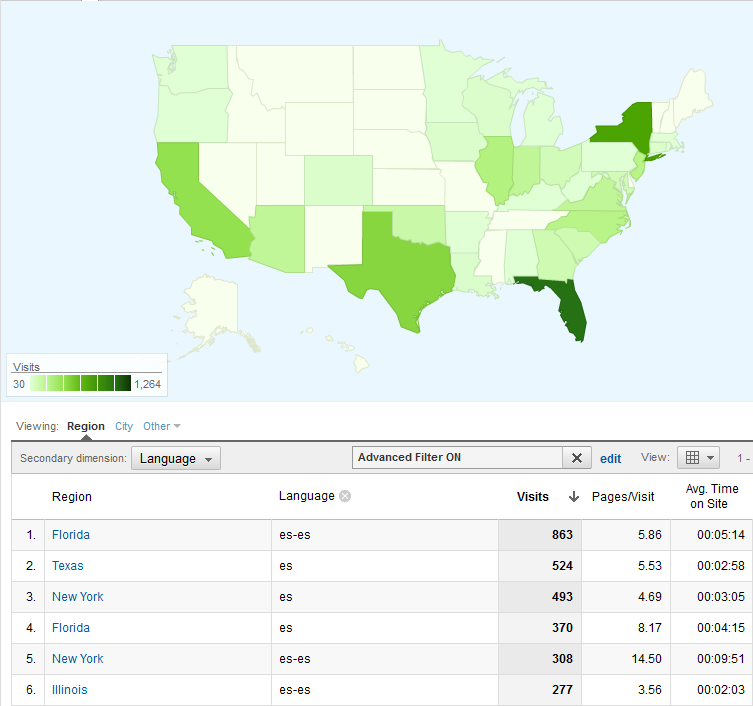Managing languages correctly is the cornerstone of great international SEO. While there are many elements specific to individual languages and countries, today I want to talk about some basic concepts:
A language does not represent a country
For example:
- Spanish is official in 21 countries
- Not official in some but widely spoken. There are 45 million Hispanophones who speak Spanish as a first or second language, as well as six million Spanish students in US (2009). From those 35.5 million are native speakers, no small amount, especially considering Spain has a population of 45 million
A country does not imply a language
More interesting data:
- Belgium has 3 official languages: Dutch, French, and German
- Besides Spanish, Basque, Catalan/Valencian, Galician are official languages in Spain too
Pretty familiar information but unfortunately things get even more complicated than that.
Reality often does not fit âofficialâ cases
Welcome to the XXI century where we move from one side of the globe to the other in half a day and many languages are lingua franca, breaking through borders and cultures.
English is the most obvious example, but there are many others like Swahili, or Kiswahili, spoken by 40 million people in 12 countries yet only being official in 4 of them. You even can search Google in Kiswahili!
Going a bit further, there are specific markets where trying to match countries and languages make no sense at all, for example hospitality. Working in your international SEO for hotels? Pay attention.
Letâs review some of those situations.
Countries and unexpected languages
Letâs say this is a medium-size hotel chain with hotels in several European countries. They offer 6 languages for users to navigate the site. A look to Google Analytics data breaking revenue by country of visit and browser language shows some interesting outliers.
- Visitors from Costa Rica who have their browser in English produce the same amount of revenue as those who have it in Spanish
- Visitors from China, Dominican Republic, or Turkey who have their browser in English produce significantly more revenue.
- With bookings from Egypt, all are using English browsers. None use Arabic
- In Latvia, a high percentage of browsers involved in conversions are in English and German
- Traffic from Spain:Â most of the browsers are in Spanish but significant portion of them are in English, German, French, and Russian
- Switzerland has 4 official languages, German (63.7 %), French (20.4 %), Italian (6.5 %), and Romansh (0.5 %) but conversions from this country by browser language come in that order: English, German, French, and Spanish
- In the United Kingdom English-browser visitors provide the most revenue, but second is French and third Japanese!
You see? Not always what we would assume.
Browser language and language of site user navigates
Wait a minute, are we taking for granted that someone using a browser in a certain language is going to navigate the site in that same language? (if available of course.)
Not always. If we take into consideration a third variable, languages available on the site visited, it all gets a bit messier. For example:
In the same hotel chain site scenario only 0.5% of the visits coming from US are using a browser in Spanish to navigate the site. Does it mean only 0.5% are Hispanics? Not at all.
If we relate visits from US navigating inside the /es/ section of the site weâll find that in total they represent 6.3%. 5.8% are using a browser in English although the prefer Spanish!

Another assumption debunked.
Probably most of those Hispanics who feel more conformable visiting the Spanish version of the site have installed a browser with English as a default language, and they donât take the time to change it because: a) it can be a technical challenge; b) they also speak English so they donât really care about; c) they are navigating at work hours where there is a higher chance to have browser installed in English.
Are your potential clients where you expect them to be according to language?
Somehow we expect to have a similar distribution for the visitors who preferred to navigate the site in Spanish but what is happening is not exactly that what shows. There are more complex reasons to identify geolocation of your audience based on language assumptions.

How geolocation for language detection fits here?
Simple, it does not fit at all. At least for hospitality sites.
If you want to know how to handle multilingual sites for humans and search engines seamlessly from a technical standpoint read what I wrote a long time ago, including a diagram of the logic involved.
In the case of e-commerce sites, geolocation is an interesting way to establish default settings like currency or legal terms associated to a country. Also language could be inferred from geographic location but even in that case I would rely more on browser language, higher chance to guess visitorâs preferred one.
Whether you should offer the typical splash page for users to select a country and language is a complete different story, which I won’t get in to.
In any case, always review your analytics data, comparing country of visitsâ origin to their browserâs language and the language they decide to navigate by.













